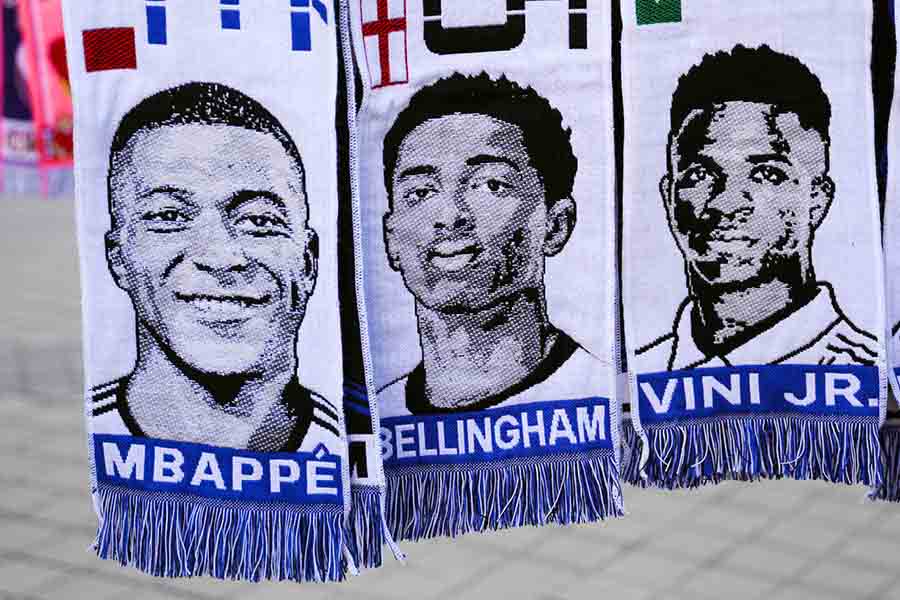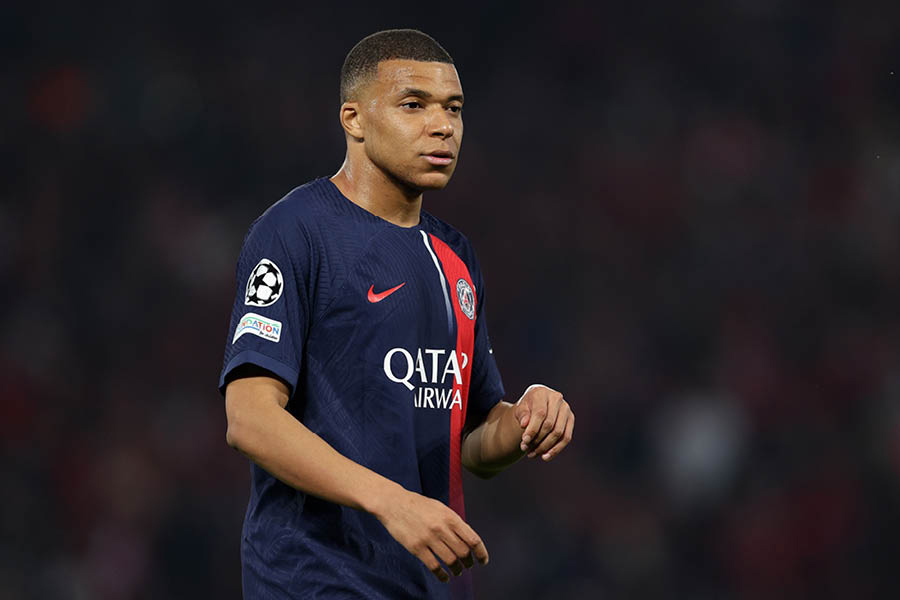On paper, Real Madrid and Kylian Mbappe are a match made in heaven. The world’s most illustrious football club and the world’s most devastating football player. The 15-time reigning champions of Europe and the most gifted French talent since Zinedine Zidane. The team accustomed to building dynasties and the man who is destined to be the crowning jewel of their latest one.
After a seven-year-long turbulent courtship, second only to Ukraine’s attempts to join the European Union (EU) in recent times in terms of drama, Mbappe is finally a Real Madrid player. That too on a free transfer. In what is the first instance of arguably the best footballer on the planet switching clubs at the peak of his powers since Cristiano Ronaldo’s move to Madrid in the summer of 2009, there is a sense of inevitability that surrounds Mbappe wearing white. An inevitability of unparalleled goals, trophies and success, wrapped up in the kind of cosmic confetti that puts to shame the few who dared to question it. And yet, questions must be asked, for the Mbappe era at Madrid may not be plain sailing.
The burden of a glorious promise
Mbappe has known he was going to play for Real Madrid since he was a teenager. How? Because he happened to be the most confident teenager anyone knew in French football. As a 14-year-old, Mbappe had toured the Spanish capital, where he clicked a picture with his idol, Ronaldo (Zidane is believed to have been the cameraman!), whose posters adorned his bedroom at the time. In 2017, Madrid swooped in, intending to supplant Mbappe from the comforting boulevards of Monaco to the cynosure of attention at the Santiago Bernabeu. But Mbappe, or more precisely his parents, resisted. Largely on account of how much game time Mbappe would (not) get in Madrid. The prodigy went to Paris Saint-Germain (PSG) instead, a club he officially leaves at the end of June, having won all there is to win in France many times over.
Despite his protagonism in Paris and, increasingly, with the French national team, Mbappe never forgot about the promise he had made to himself (and to his family and friends). The promise of decking out in all-white at football’s equivalent of the Vatican. After a narrow miss in the summer of 2022, which apparently ruffled feathers on both sides, Mbappe has been Madrid-bound since February this year. For the first time in a long time, Mbappe looks excited to play club football, maybe even a touch giddy. But dreaming to play for Madrid and actually living out that dream are two different things. Just ask Michael Owen, David Beckham, Gareth Bale, James Rodriguez or any number of stars who dimmed far too soon among Madrid’s eye-popping constellations.
Notwithstanding Mbappe’s extraordinary talent, no player, not even Ronaldo, has entered Madrid with the same burden of a glorious promise to fulfil. The trickiest part is nobody knows what this fulfilment amounts to. Scoring 50 goals every season? Winning half-a-dozen UEFA Champions Leagues (UCLs) to go with a handful of Ballons d’Or? Shaking a leg with Taylor Swift the next time the pop queen is in town? In a place where vibes reign supreme, Mbappe’s job description is to exceed whatever expectations are heaped on him day in and day out.
A tactical conundrum

What sort of a formation will get the best out of Mbappe, Jude Bellingham and Vinicius Junior? Getty Images
At a more objective level, Madrid and Mbappe have their task cut out in figuring out how to get the best out of each other. There is no hiding Mbappe’s preference for playing as an inside left-forward, which involves him using his pace and precision to cut in from the left wing and curl the ball either side of the goalkeeper. He has done it so many times for PSG and France that he might as well patent the manoeuvre. At Madrid, however, there is someone else who operates in the inside-left channel, the man Madrid manager Carlo Ancelotti has tipped to win the Ballon d’Or this October — Vinicius Junior. Asking Ancelotti to optimise the efficiency of Mbappe and Vinicius as part of the same team is a bit like asking a model to nail a ramp walk with two left boots. To complicate matters further, Madrid’s third forward is Rodrygo, who bears no resemblance to the big, muscular number nines (such as Olivier Giroud or Edinson Cavani) Mbappe thrives playing off. Then there is Jude Bellingham, who loves marauding through the middle in the final third, something Mbappe is best equipped to do when playing as a centre forward.
In other words, Ancelotti has to mastermind a formation that does Mbappe justice without taking away from the attacking trident that has just won the Italian a league and UCL double. Bear in mind that after Lionel Messi, Mbappe is probably the most disinterested attacker from a defensive standpoint in the game today. Not that Vinicius and Rodrygo are far behind. In fact, among all forwards who played no less than 900 minutes across Europe’s Big Five leagues in 2023-24, Mbappe ranked 318th in combined tackles plus interceptions per every 1,000 opponent touches. Rodrygo ranked 212th, and Vinicius 185th. Mbappe’s reluctance to put pressure on the ball meant that coaches like Mauricio Pochettino and Luis Enrique endured routine frustrations at PSG. For Ancelotti, that may translate into one raised eyebrow too many.
The battle of egos

Mbappe taking on Madrid in a UCL fixture at the Santiago Bernabeu in March 2022 Getty Images
There is a case to be made that if anyone can solve the tactical conundrum involving Mbappe at Madrid, it is Ancelotti. After all, this is the same coach who found a way to incorporate Andrea Pirlo and Kaka in the same midfield at AC Milan, who somehow made Didier Drogba and Nicolas Anelka discover mutual chemistry at Chelsea, who packed his 2014-15 Madrid side with Ronaldo, Bale, Karim Benzema and James Rodriguez. But even if Ancelotti cracks the formation puzzle, the battle of egos might prove too much to handle.
Across his career, Mbappe has cultivated a notorious reputation for shenanigans, such as arguing with teammates over penalty kicks or refusing to run during a counter-attack after not receiving the ball soon enough. At PSG, Mbappe had persistent dressing room issues with Cavani and Neymar. In the colours of France, he is believed to have not got along with Benzema. Unlike the PSG team of last season, sans Messi and Neymar, and the French unit that will head to the Euros in Germany this summer, Mbappe will not be the sole superstar at Madrid. This is reflected in the fact that he will not be usurping Vinicius to take the number seven shirt and will, in all likelihood, have to wait for Luka Modric to leave the club to get hold of the number 10.
Even though Mbappe took to social media to reassure that PSG was not Kylian-Saint-Germain when rumours of him pulling his weight hit the ceiling, there is little doubt that the 25-year-old relishes being the main man. At Madrid, there is room for only one boss. And no, he does not kick a football. Florentino Perez, the 77-year-old Madrid president, has handled bigger egos than Mbappe in the past (Ronaldo and Jose Mourinho, to name two) and had no hesitation in showing the door to both once push came to shove. At Madrid of all places, Mbappe will have to watch his step when it comes to respecting the pecking order. The kind of hot-and-cold equation he shared with PSG president Nasser Al-Khelaifi, for instance, would be impossible to sustain at Madrid.
In terms of image and brand-building, it is hard to see how Mbappe and Madrid can mess things up. But, unlike Ronaldo’s return to Manchester United or Messi’s new chapter at Inter Miami, Mbappe to Madrid is a sporting project first and a marketing gimmick later. Having said that, given the sheer talent at his and the club’s disposal, Mbappe could do to this article what he has done to several defences — tear it to shreds. Nobody would be surprised if Mbappe hits the ground running at Madrid and quickly elevates himself in the ranks of Madrid’s icons. To do so, though, Mbappe would have to overcome considerable challenges posed by Madrid’s nature as well as his own. Madrid’s newest galactico will do well to remember that what seems certain on paper rarely translates seamlessly on grass.


